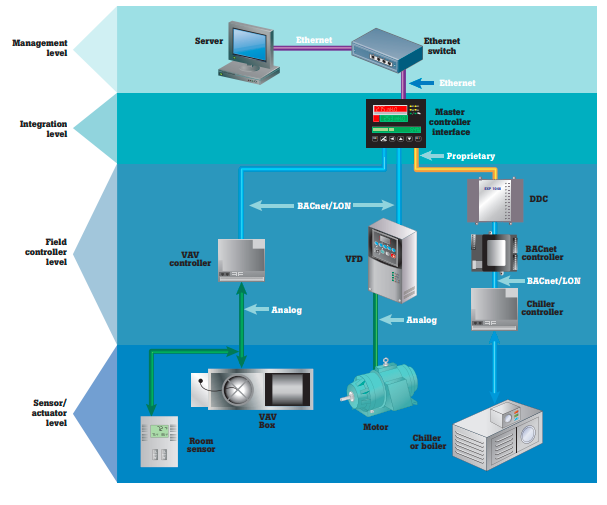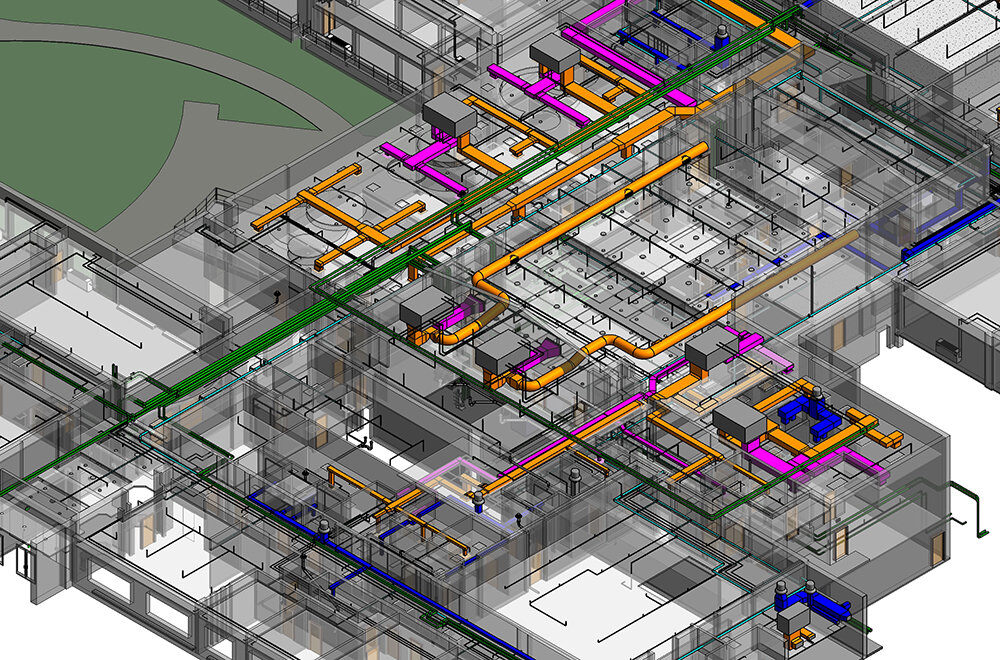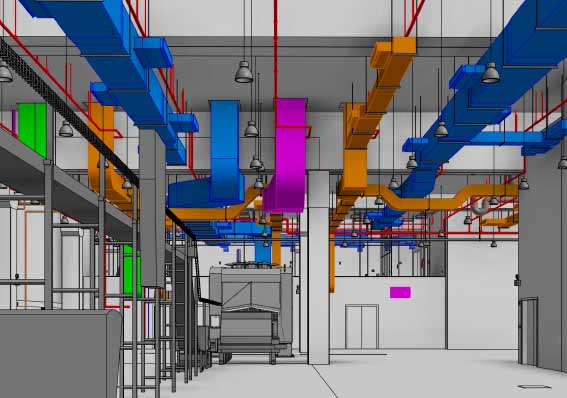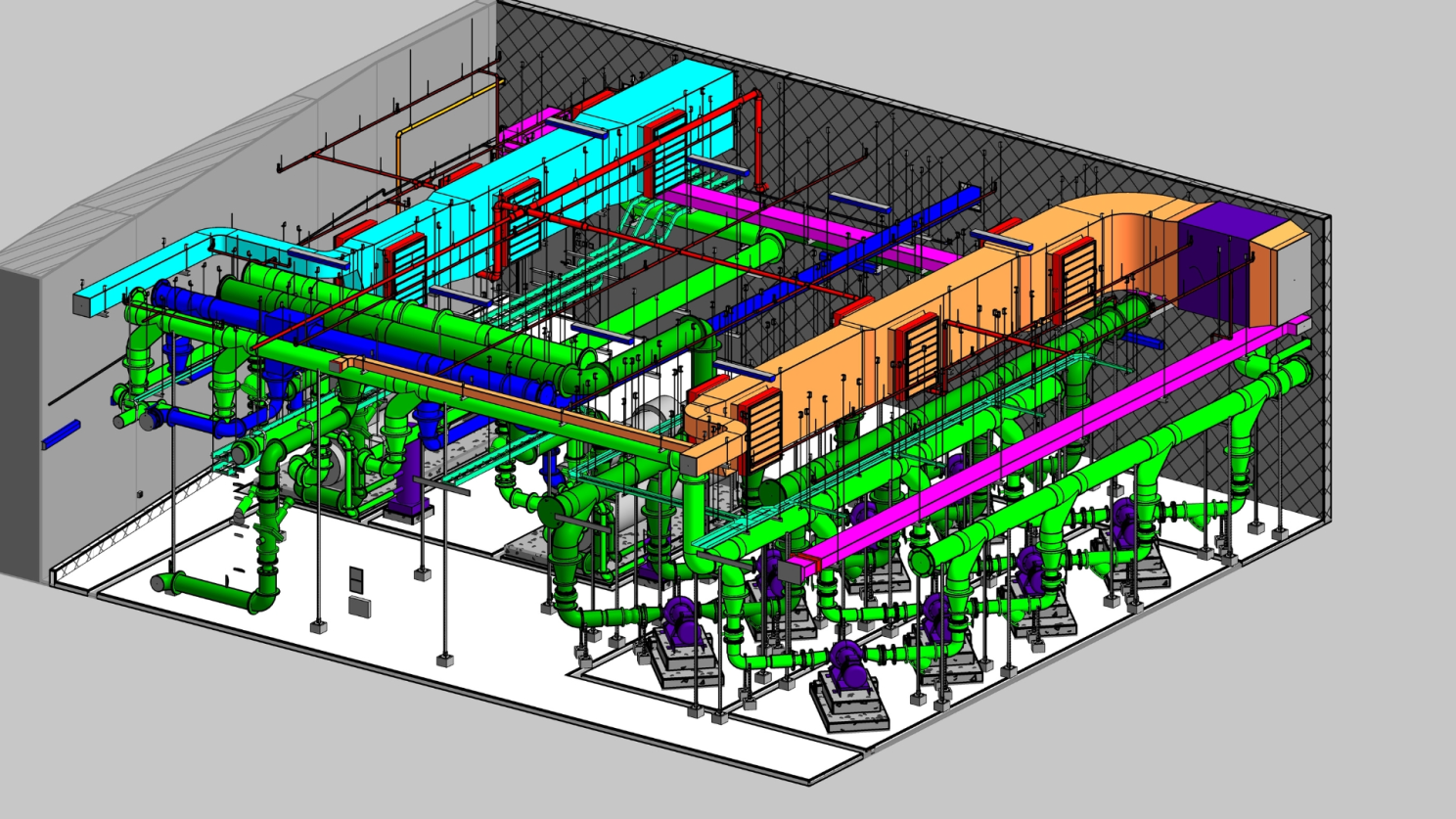
The construction industry is undergoing a major transformation with the adoption of smart technologies. One of the most significant advancements is the integration of building automation systems (BAS) in MEP engineering. With increasing demand for energy efficiency, sustainability, and intelligent infrastructure, MEP engineers are leveraging automation to design and maintain smarter buildings. By seamlessly integrating mechanical, electrical, and plumbing (MEP) systems with automation, buildings can operate efficiently, reduce energy consumption, and enhance occupant comfort.
What is Building Automation in MEP?
Building automation refers to the centralised control of a building’s essential systems, including HVAC, lighting, security, and plumbing. In MEP design, BAS ensures that these systems work in harmony, improving efficiency and reducing operational costs. Modern BIM automation tools, such as Revit MEP, enable engineers to design MEP systems with precision, allowing seamless integration of automation components from the initial planning stage.
Why MEP Engineers Should Leverage Advanced Automation?

The shift towards smart and sustainable buildings has made building automation a necessity rather than a luxury. MEP engineers play a crucial role in designing energy-efficient systems that comply with green building standards. The use of BIM MEP software allows engineers to simulate system performance, optimise energy usage, and detect potential issues before construction begins. MEP works in construction are evolving, and those equipped with automation expertise have a competitive edge in the industry.
Key Components of Building Automation Systems in MEP

A well-integrated building automation system consists of various components that enhance the efficiency of MEP systems:
1. Sensors and Controllers
Monitor and regulate environmental factors such as temperature, humidity, and lighting.
2. HVAC Automation
Optimizes heating, ventilation, and air conditioning performance.
3. Lighting Controls
Adjusts lighting based on occupancy and daylight levels.
4. Security & Access Systems
Enhances building safety through automated access control and surveillance.
5. Water Management Systems
Improves plumbing efficiency, detects leaks and reduces water waste.
Benefits of Building Automation Systems for MEP Engineers
The integration of BAS in MEP engineering offers several advantages:
1. Energy Efficiency
Automation optimises energy usage, reducing the carbon footprint.
2. Cost Savings
Automated systems lower operational and maintenance costs.
3. Enhanced Safety & Comfort
BAS ensures a safer and more comfortable indoor environment.
4. Predictive Maintenance
IoT-enabled BAS detects issues before they escalate, reducing downtime.
5. Regulatory Compliance
Helps meet green building certifications and energy efficiency regulations.
BIM & Building Automation
The combination of BIM automation and BAS has revolutionised the construction industry. BIM MEP modeling allows engineers to create digital twins, which are virtual replicas of a building’s systems. These digital models enable real-time monitoring and predictive maintenance, making facility management more efficient. By integrating BAS with MEP BIM services, engineers can develop data-driven solutions that enhance building performance.
Top Software & Tools for MEP Automation
To implement advanced automation, MEP engineers rely on various software and tools:
1. Revit MEP
A leading BIM MEP software used for detailed MEP system design.
2. AutoCAD MEP
Assists in creating and managing MEP drawings.
3. BAS Software
Platforms such as Niagara Framework and Schneider Electric’s EcoStruxure streamline building automation.
4. IoT Platforms
Enables real-time data collection and predictive analysis for smarter decision-making.
Challenges in Implementing Building Automation in MEP & How to Overcome Them
Despite its benefits, implementing building automation systems in MEP presents some challenges:
-
High Initial Costs – Overcome by demonstrating long-term savings and return on investment.
-
Integration Complexities – Addressed through standardised protocols and advanced BIM automation tools.
-
Lack of Skilled Professionals – Resolved by upskilling engineers with specialised training.
Career Growth & Opportunities for MEP Engineers in Smart Building Automation
With the increasing demand for smart buildings, MEP engineers with expertise in BAS and BIM MEP services are in high demand. MEP engineer salary packages are significantly higher for professionals skilled in automation and MEP BIM modeling. Engineers who adapt to this trend will have lucrative career opportunities in sustainable construction, facility management, and smart city projects.
How Novatr’s BIM MEP Course Can Help Engineers Specialize in Building Automation
1. Comprehensive BIM Training
Provides in-depth knowledge of MEP BIM modeling, MEP system automation, and Revit MEP, helping engineers design and implement smarter and more efficient building automation solutions.
2. Industry-Relevant Curriculum
Focuses on MEP design, BIM automation, and MEP BIM services, ensuring engineers gain expertise in integrating building automation systems with modern construction practices.
3. Expert-Led Learning
Offers training by industry professionals, delivering practical insights and hands-on applications of building automation systems to enhance real-world problem-solving skills.
4. Project-Based Learning
Incorporates real-world case studies and projects, allowing engineers to apply MEP works in construction and gain experience in BIM automation for smart buildings.
5. Career Growth & Placement Assistance
Enhances job opportunities in MEP engineering and MEP BIM modeling, increasing earning potential and improving MEP engineer salary prospects in the industry.
6. Future-Ready Skill Development
Equips engineers with skills in IoT platforms, BAS software, and automation tools, preparing them for the growing demand for smart infrastructure and BIM MEP services.
Conclusion
Integrating building automation in MEP engineering is shaping the future of smart and sustainable infrastructure. MEP engineers who leverage BIM automation and advanced BAS technologies are at the forefront of this transformation. Engineers can enhance their career prospects by mastering MEP BIM modeling, MEP system automation, and smart building solutions while contributing to a more energy-efficient and sustainable built environment.
Among the best options, the BIM Professional Program for MEP Engineers by Novatr stands out the most. For the latest updates, tools, and insights into the MEP and BIM industry, explore Novatr's Resource Page.
FAQs
Q1: What is the role of Building Automation Systems in MEP Engineering?
Ans: Building automation systems (BAS) play a crucial role in MEP engineering by integrating and automating mechanical, electrical, and plumbing (MEP) systems. BAS optimises energy efficiency, improves occupant comfort, and enhances security by enabling real-time monitoring and control of HVAC, lighting, and water management. With advanced BIM automation tools, MEP engineers can design and implement innovative building solutions, ensuring sustainable and cost-effective infrastructure management.
Q2: Why should MEP Engineers learn about Building Automation Systems?
Ans: Integrating building automation in MEP engineering transforms the construction industry by making buildings more efficient and intelligent. Engineers skilled in BIM MEP modeling, BIM MEP software, and MEP BIM services can design and optimise MEP systems for automation, improving building performance and sustainability. Additionally, expertise in building automation systems enhances career prospects and increases an MEP engineer's salary, as demand for competent building specialists grows.
Q3: How does Revit MEP support Building Automation?
Ans: Revit MEP is a powerful BIM MEP software that enables engineers to design, analyse, and simulate MEP systems for automation. It allows the integration of BIM automation, helping MEP engineers optimise HVAC, electrical, and plumbing designs for innovative building solutions. With features for MEP BIM modeling, Revit MEP enhances coordination between different building systems, ensuring efficient implementation of MEP works in construction with building automation systems.
Q4: What are the benefits of integrating BIM with Building Automation?
Ans: The combination of BIM automation and building automation systems revolutionises facility management by creating digital twins—virtual models that provide real-time data on building performance. Engineers can predict and resolve system inefficiencies through MEP BIM modelling, optimise energy consumption, and improve operational reliability. Additionally, BIM MEP services enhance stakeholder collaboration, reducing construction errors and making MEP design more efficient.
Was this content helpful to you



.jpeg)



